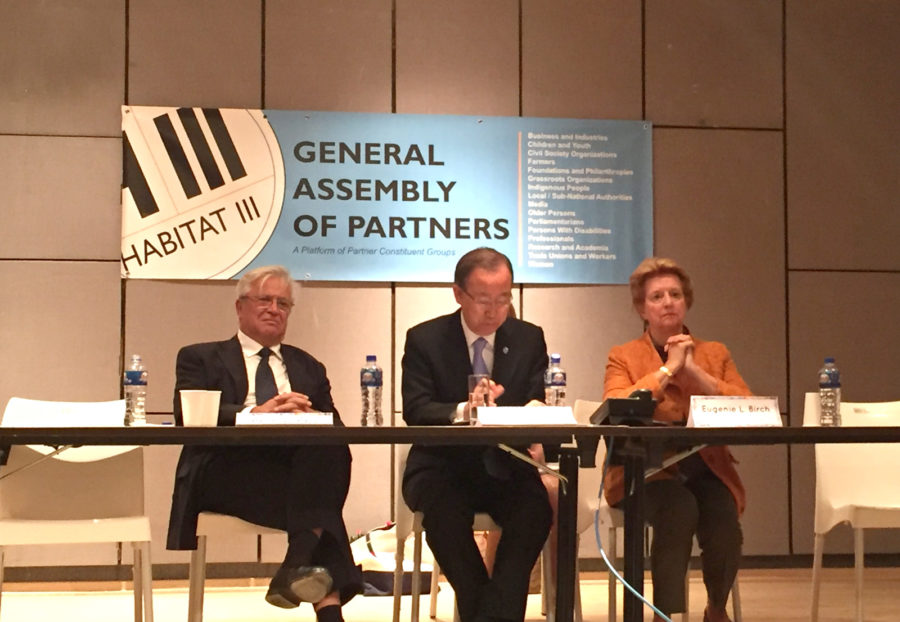The New Urban Agenda: A new era for stakeholder engagement in urban development

The adoption of the New Urban Agenda comes at a time when the world is grappling with challenges of recurring and persistent conflict and complex humanitarian crises, climate change, rising urban poverty and exclusion, crime, violence and xenophobia. These issues are multi-dimensional and interconnected, and are addressed as such through the 2030 Development Agenda, including the Sendai Framework for Disaster Risk Reduction (SFDRR), the Addis Ababa Action Agenda (AAAA), the Sustainable Development Goals (SDGs), the Paris Agreement on Climate Change, and the New Urban Agenda. Coming after the adoption of legally binding SDG and Paris Agreements, the New Urban Agenda links the two to the mega-trend of this century – urbanization – and makes a strong case for pursuing a radically different form of urbanization than has been seen in the past decades.
The New Urban Agenda has also been formulated in a radically different fashion as compared to past agreements, including those comprising the 2030 Development Agenda, as well as Agenda 21 (1992) and the Habitat Agenda (1996). Tens of thousands of stakeholders participated, directly or indirectly, in the drafting of the New Urban Agenda, organized predominantly through a platform called the General Assembly of Partners (GAP). GAP came into being only in April 2015, established with the aim of providing coherent, systematic inputs from all stakeholder groups in the Habitat III process and development of the New Urban Agenda. Its role gained prominence as negotiations progressed, especially as stakeholders presented their views in a well-aligned, mutually supportive manner, instead of conveying a sense of competition and ill-feeling which has marked previous processes. This made member-states sit up and take notice, and slowly built up broad-based respect and support for GAP. Several elements of GAP’s proposals are, as a result, diffused throughout the New Urban Agenda.
Upon reflection, I believe that the success of GAP was due to three key factors:
- A focus on synergy among groups rather than perfect agreement, with each Partner Constituent Group (PCG) free to pursue its own agenda instead of being forced to somehow fall in line with others’ priorities. This allowed different constituencies to come together with an open mind and agree on a small number of critical elements, which were summarised in the GAP outcome document “Partnerships for the New Urban Agenda”, and formed the basis of GAP’s collective advocacy.
- A commitment to be as inclusive as possible, which was reflected in (a) the expansion of the 14 PCGs originally incorporated in GAP to 16, to include Older Persons and Persons with Disabilities, both of whom are not part of the nine Agenda 21 Major Groups formally recognized in the UN system; and (b) geographical and gender balance within the GAP Executive Committee, which helped foster a feeling of empowerment among those who had not traditionally had a voice in these processes, whether a farmer from Jamaica, an architect from Bangladesh, an indigenous person from Kenya, or an older person from the United States.
- Political and financial support from the Habitat III secretariat, which opened up the spaces for GAP PCG co-chairs in Advisory Committees of Regional and Thematic Meetings as well as Policy Units, and provided funding support to enable them to travel to these consultations as well as for GAP Executive Committee Meetings. This enabled stakeholder representatives from across the world to participate in the process, rather than rely on a handful of New York-based voices through which to channel their concerns and priorities.
